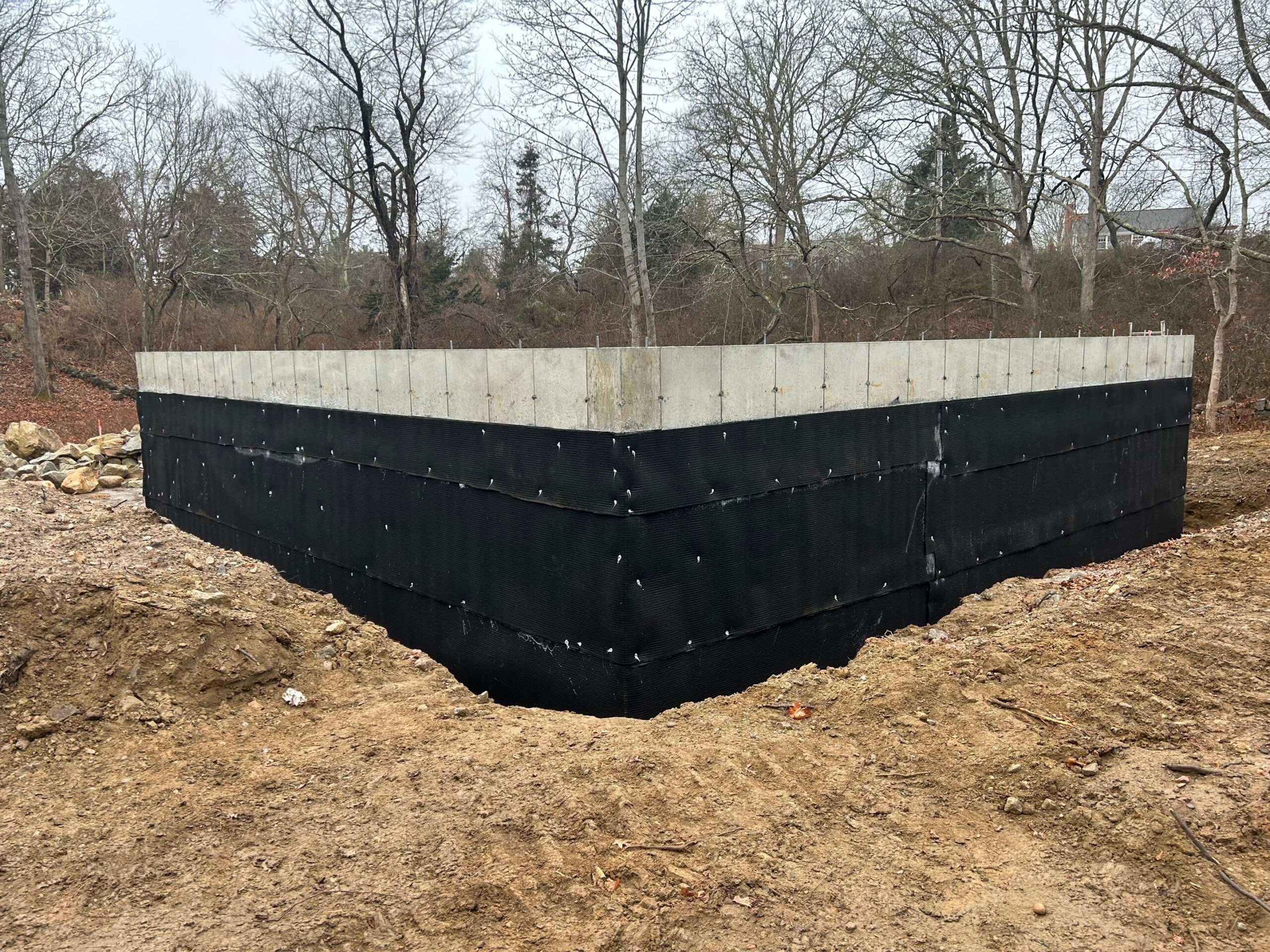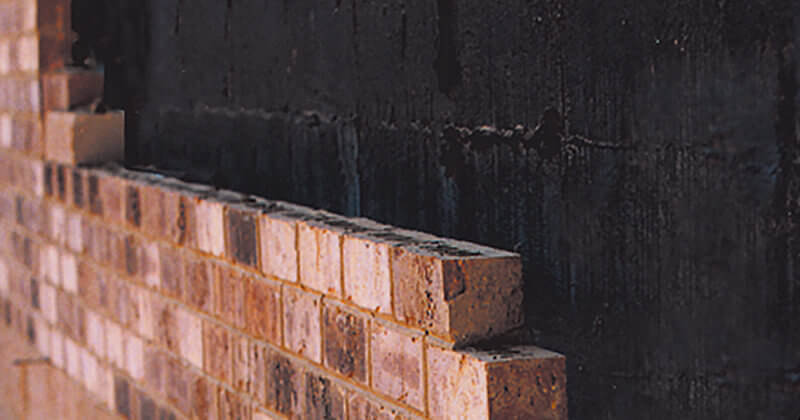The ultimate blueprint to mould treatment newcastle: What to expect from start to finish
Checking Out the Different Methods and Solutions for Effective Damp Proofing
Moisture in buildings poses substantial obstacles to both architectural integrity and interior air top quality. Different techniques and solutions have actually emerged to battle this prevalent problem. From conventional damp-proof membranes to cutting-edge chemical treatments, each approach provides unique benefits. Recognizing these alternatives is important for effective dampness control. Nevertheless, choosing the appropriate option depends upon particular structure conditions and needs, motivating more exploration into the most efficient moist proofing strategies readily available.
Recognizing the Root Causes Of Wetness
Wetness can emerge from different resources, recognizing these causes is important for reliable removal. Generally, dampness originates from three key resources: increasing wet, permeating wet, and condensation. Rising damp happens when groundwater takes a trip up through porous materials, such as block or rock, commonly due to a lack of a reliable obstacle (damp removal newcastle). Permeating moist is normally triggered by exterior factors, consisting of roof leaks, faulty gutters, or damaged walls, enabling water to infiltrate a property. Condensation, on the other hand, results from excess dampness airborne, usually intensified by inadequate air flow and temperature level differences, leading to water beads basing on surfaces. Determining these underlying problems is essential, as each kind of wetness needs a customized strategy for removal. Appropriate evaluation helps in identifying one of the most effective solutions, inevitably guarding the architectural integrity of a building and boosting interior air high quality
Standard Damp-Proof Membranes

Chemical Damp-Proofing Solutions
Chemical damp-proofing options supply an innovative method to avoid dampness intrusion in buildings. These approaches usually include the application of fluid chemicals that pass through stonework and create an obstacle against increasing moist. Frequently utilized chemicals consist of silanes, siloxanes, and other water-repellent agents that respond with surface area products to develop a hydrophobic layer.The application process usually requires boring holes into the wall surfaces, infusing the chemical solution, and allowing it to treat. This approach is particularly advantageous for older structures where traditional damp-proof membranes may be unwise. Additionally, chemical damp-proofing can be much less turbulent and extra cost-effective than comprehensive remodelling projects.While efficient, these remedies depend on proper application and environmental conditions for peak efficiency. Normal maintenance and monitoring are necessary to assure the durability of the damp-proofing treatment. Overall, chemical damp-proofing stands for a functional choice for protecting structures against moisture-related damages
Cavity Wall Surface Building Strategies
Cavity wall building and construction techniques use many advantages, especially in dampness control and power efficiency. By integrating an air void between 2 layers of masonry, these walls properly mitigate water ingress while improving insulation. This mix not only shields structures from moisture yet also contributes to decreased power intake.
Benefits of Cavity Walls
When taking into consideration effective damp proofing methods, the benefits of cavity walls stand apart prominently. Tooth cavity walls include 2 different layers, creating an air space that efficiently minimizes dampness infiltration. This style minimizes the danger of moisture, as the outer wall functions as a barrier against rain and water access. Additionally, dental caries wall surfaces boost thermal insulation, which adds to energy effectiveness by decreasing warm loss. They likewise provide sound insulation, helping to create a quieter interior environment. In addition, the air gap enables ventilation, which aids in moisture control and lowers the likelihood of mold growth. These advantages not just improve the total comfort of a building yet likewise add to its longevity and structural honesty.
Wetness Control Techniques
Efficient dampness control methods are important in cavity wall building and construction to assure long-term defense versus moisture. One key method entails the incorporation of weep holes, which assist in water drainage from the tooth cavity, protecting against build-up. Additionally, making use of breathable membranes can aid manage dampness levels while permitting trapped vapor to get away. Proper placement of insulation is additionally vital, as it ought to not block drain courses. Making sure that the external leaves of the dental caries wall surface are built with water-resistant materials enhances total longevity. Normal maintenance checks are important to identify any kind of clogs or damage early, safeguarding the structure's honesty. Eventually, a combination of these techniques forms a durable defense against dampness invasion in tooth cavity wall surfaces.
Insulation and Energy Efficiency
Insulation plays an important duty in improving energy performance within tooth cavity wall surface building and construction. By integrating insulating products, these walls produce a thermal barrier that decreases warm loss and reduces power consumption. Efficient insulation not only assists maintain a secure indoor temperature but also minimizes the danger of wetness, as it avoids condensation published here within the wall surface dental caries. Various strategies, such as using stiff foam boards or mineral woollen, can be utilized to achieve perfect insulation efficiency. Additionally, proper installment is necessary to assure that gaps and gaps are lessened, which can otherwise jeopardize power efficiency. Eventually, a well-insulated dental caries wall contributes greatly to general sustainability and lowers heating & cooling expenses for property owners.
Outside Damp Proofing Approaches
External wet proofing techniques are vital for protecting structures from dampness seepage. 2 effective methods consist of the application of waterproof membranes and the setup of French drains pipes. These services aid mitigate water build-up and maintain the integrity of buildings.
Waterproof Membrane Layer Application
While various approaches exist for avoiding wetness ingress, the application of water-proof membrane layers stays an extremely efficient exterior moist proofing strategy. These membranes are usually made from materials such as polyethylene, rubber, or customized bitumen, offering a robust obstacle against water penetration. The installation process involves using the membrane layer to the outside surfaces of structures or wall surfaces, ensuring full insurance coverage to protect against leakages. Appropriate attachment and securing at joints are important to taking full advantage of effectiveness. Water-proof membrane layers can be applied in various forms, including fluid finishings and sheet membranes, permitting adaptability based on the specific demands of the framework. This method not just safeguards buildings from moisture but additionally enhances their longevity and architectural stability.
French Drainpipe Setup
One reliable technique for managing groundwater and protecting against wetness buildup around a structure's foundation is the setup of a French drainpipe. This drainage system consists of a trench loaded with gravel and a perforated pipeline that redirects surface water far from the foundation. Appropriate installment requires cautious preparation, making sure that the drainpipe slopes far from the framework to help with ideal water flow. he said Furthermore, the location of the drain is crucial; it needs to be positioned in areas vulnerable to merging or excess moisture. Routine upkeep, consisting of clearing up debris from the gravel and guaranteeing the pipeline continues to be unobstructed, is necessary for lasting effectiveness. Ultimately, a well-installed French drain can significantly minimize the threat of water-related concerns in cellars and structures.
Inside Waterproofing Strategies
Interior waterproofing methods are vital for safeguarding a building's interior from moisture infiltration and potential water damages. These techniques commonly entail the application of customized products and methods created to produce a moisture barrier within the structure. One common approach is making use of waterproof coatings or sealers on wall surfaces and floors, which avoid moisture from passing through surfaces.Additionally, installing interior water drainage systems, such as sump pumps, can properly take care of water build-up in cellars and crawl spaces. An additional approach includes the use of vapor obstacles, which are set up to inhibit moisture movement from the ground into living spaces.Moreover, addressing any kind of fractures or gaps in wall surfaces or foundations with suitable sealants assures a detailed protection against water invasion. By executing these indoor waterproofing methods, homeowner can substantially minimize the risk of mold and mildew growth, structural damages, and other moisture-related problems. Proper execution of these strategies is necessary for long-term security and building stability.
Regular Maintenance and Examination Practices
Normal maintenance and assessment techniques are important for assuring the long-term performance of damp proofing options in any kind of building. Routine checks make it possible for property owners to determine very early indicators of moisture invasion, such as peeling off paint, mold and mildew development, and musty odors. These signs can signify underlying concerns that need immediate attention.Inspections need to be conducted at the very least yearly, concentrating on at risk locations like basements, crawl areas, and outside wall surfaces. Throughout these analyses, building proprietors should examine sealants, drainage systems, and ventilation to verify they work correctly.Additionally, preserving downspouts and rain gutters is essential, as clogged systems can result in water accumulation near the foundation. Implementing a routine maintenance routine, together with timely repair work, can significantly extend the lifespan of wet proofing steps and secure the structural integrity of the building. Aggressive actions inevitably add to the general health and safety of the living setting.
Regularly Asked Inquiries
The Length Of Time Does Damp Proofing Normally Last?
The duration of damp proofing performance differs, commonly lasting between 20 to 50 years. Variables such as application top quality, environmental problems, and upkeep methods substantially my website influence the longevity of the wet proofing treatment.

Can I Damp Proof My Home Myself?
The specific considered the usefulness of do it yourself damp proofing. With proper study and the ideal materials, it is possible. They additionally recognized the value of specialist advice to assure resilient efficiency and protect against future problems.
What Are the Indicators of Ineffective Damp Proofing?
Indicators of ineffective moist proofing consist of persistent moldy smells, noticeable mold growth, peeling off paint, wet patches on walls, and timber degeneration - damp specialist newcastle. House owners should attend to these concerns promptly to avoid more damages and health issues
Does Damp Proofing Affect Indoor Air High Quality?

Exactly How Much Does Expert Damp Proofing Expense?
Professional wet proofing prices differ considerably, usually varying from $1,000 to $5,000 depending upon the residential or commercial property's size, the extent of the damp concern, and picked approaches. Each scenario needs a tailored analysis for exact rates. Frequently, moisture stems from three primary resources: climbing moist, permeating moist, and condensation. When considering effective wet proofing approaches, the advantages of tooth cavity walls stand out plainly. Exterior moist proofing approaches are crucial for shielding frameworks from wetness infiltration. While numerous techniques exist for stopping moisture access, the application of water resistant membranes remains a very efficient outside damp proofing strategy. Indications of ineffective wet proofing include relentless mildewy odors, visible mold and mildew growth, peeling off paint, moist spots on walls, and timber decay.